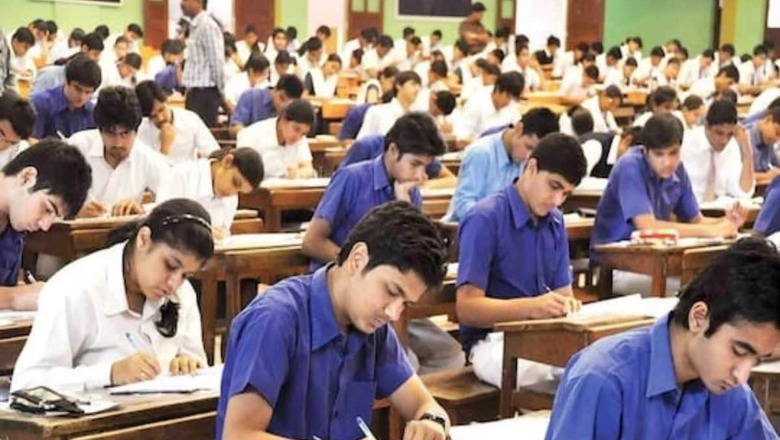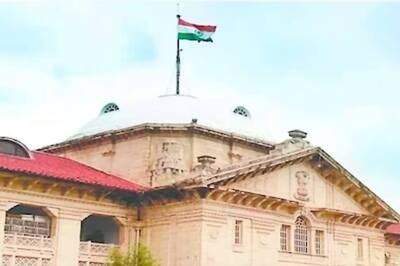
views
Even as the Centre has released a set of guidelines to regulate coaching centres across states through a legal framework, experts, parents, members of coaching institutes and students, News18 spoke to had doubts about the age bar, the cap on coaching hours that the rules propose as well as on its overall implementation and above all, if these will eventually be able to bring down the number of student suicides. This, they said, can be done by reducing the intense competition, which can only be achieved if the number of seats across premier institutions such as IITs and AIIMS is increased manifold.
The Ministry of Education (MoE) on Thursday released model guidelines for implementation by states to regulate coaching centres. The new guidelines bar these private centres from enrolling students below the age of 16 years, making “misleading claims” about getting rank or entry to top colleges. It also mandates that coaching centres will not hold classes for more than five hours a day to avoid “undue stress” on students.
Also Read| Coaching Centres Can’t Enrol Students Younger than 16, Make ‘Misleading’ Claims: Govt’s New Guidelines
The proposed rules titled ‘Guidelines for Regulation of Coaching Centres 2024’ state that no coaching centre shall make “misleading promises or guarantee of rank or good marks” to parents/students for enrolling them in the centre. Besides, it does not allow coaching centres to be registered unless they have a counselling system as per the requirement of the said guidelines.
The guidelines come in the wake of an unprecedented number of students enrolled in coaching preparing for entry to top engineering and medical colleges dying of suicide in Kota, Rajasthan, which is the coaching capital for the country’s major competitive examinations such as JEE (Main and Advanced) and NEET. To be sure, in 2023 alone, 26 students in the district died of suicide — the highest in a calendar year since 2015.
While Joint Entrance Examination (JEE) is for entry to top engineering colleges such as IITs and NITs; the National Eligibility cum Entrance Test (NEET) is conducted for admission to undergraduate medical courses. These two, according to coaching institutes, are the top exams to prepare for and the largest number of students enrol in coaching institutes. This is followed by civil services, for which the national capital’s Mukherjee Nagar is the hub, and mostly students who are already done with class XII or graduation enrol. The largest number of student suicides have been reported from those enrolled for coaching in JEE and NEET, all of whom are still in secondary school.
The ministry in its letter to states said that instances of such centres charging exorbitant fees from students, undue stress resulting in students committing suicides, loss of precious lives due to fire and other accidents, and many other malpractices being adopted by these centres are widely reported, accordingly, the guidelines have been prepared and are being forwarded for consideration by States/UTs byway of appropriate legal framework.
The proposed age bar, classroom hours
While the guidelines state that no coaching centre shall enrol students below the age of 16 years, the average age of students enrolled across prominent coaching institutes in the country is 13-14 years. Most of these students are admitted to dummy schools while enrolling full-time in coaching institutes. According to members of coaching institutes, most of the students start coaching for JEE and NEET from class IX onwards. Below class IX, the institutes take admission for students as young as class VI, who have a different syllabus altogether including analytical skills, however, these are lesser numbers as compared to the average lot.
The guidelines clearly state that coaching classes for those students who are also studying in an educational institution such as a school shall not be conducted during their institutions/schools’ hours, so that ‘dummy’ schools can be avoided.
Experts, parents and students News18 spoke to said that the enrolment age proposed in the guidelines is not feasible since a student is around 17 years old when they write JEE or NEET and just one year of coaching will not suffice in the case of most of the students.
“I don’t think these guidelines can address the larger issue. The government by putting the entire onus on coaching institutes cannot just put aside the pressure on students. What about increasing the number of seats across the top institutions such as IITs? And why must students not prepare for premier colleges, where getting into one can guarantee them a good career?,” said Bhaskar Kedia, father of one of the JEE toppers last year, based in Ghaziabad.
While parents feel coaching is essential in the current scenario with such high competition in the market, they believe the number of hours of classes will depend on the number of students enrolled and their grasping abilities.
“In today’s era coaching is an absolute essential even for the class toppers. While some checks on quality and number of students enrolled are necessary, it is again not feasible to cap the hours, as students still may need to put in more hours for understanding, which depends from case to case,” said S Gupta, a chartered accountant, and father of one of the NEET aspirants.
Coaching hubs such as those in Kota house lakhs of students from all parts of the country, mostly living in hostel facilities provided by the coaching centres or in different kinds of paid accommodation. Most of these coaching institutes are known for gruelling hours of study without any weekly offs for students or leaves even during festivals.
The Kota administration last year came up with a rule for coaching centres to allow weekly off to students and no exam to be conducted on or right after the weekly off after it noticed the number of suicides going up the very next day of the students having written a weekly exam.
Scaling up seats
Nearly 18,000 undergraduate seats are available across 23 IITs in the country for which over 11 lakh students wrote the JEE (Mains) exam in 2023. Only over a lakh of these were able to clear the exam to be able to sit for JEE (Advanced), based on the result of which, admission to IITs, NITs and other top colleges can be secured.
According to Prof V Ramagopal Rao, vice-chancellor, BITS Pilani and former IIT-Delhi director, while having guidelines to regulate coaching centres is essential, its monitoring and implementation is the major challenge. Besides, this alone cannot solve the larger issue of intense competition and student suicides. “First of all students below class IX enrolling for coaching is stretching it too far. Some correction in the way coaching centres take admissions was required and the guidelines may help with the same,” said Rao.
However, the problem lies in too intense competition because of a limited number of seats across top institutes in such a large country where over 10 lakh students are sitting for a few thousand seats. “In the 1970s-80s, coaching was not a practice, only some used to enrol for it. Even though the competition in terms of the number of students was lesser, but it was still one of the most difficult exams in the country to crack. And students preparing for it were those with intrinsic abilities and not just a tutored lot. So, unless the number of seats is scaled up in the IIT system or even for other top institutes, the competition will not come down and the problem will remain the same,” he said.
Unlike universities in developed countries such as the US, he added, where one institution would admit around 22,000 students in one go, India needs to have a financial model to expand to accommodate a much larger number of students given its overall youth population.
“The scale of quality institutions needs to be scaled up very much in order to address this kind of demand. It requires proper funding and planning. So far, the number of seats in the IITs has only increased on account of allowing reservations, but not so much for expanding its overall strength. It has never been planned that way,” said Prof Rao.
Similarly, for NEET, around 21.5 lakh students appear for the exam every year for just around 1 lakh seats. To be specific, there are 1,075,83 MBBS seats, of which 56068 are in government and semi-government institutions and 51515 in private/deemed medical colleges across India. Of these over 20 lakh students who sit for the exam, only around 2-2.5 lakh can clear it.
However, some of the coaching institutes already focusing on students’ mental health welcomed the guidelines.
Neeraj Kumar, Co-founder and CEO, PeakMind, a coaching institute, said the guidelines recognise a ground-breaking shift towards holistic student welfare in coaching centres. “The emphasis on integrated wellbeing demonstrates a shift toward nurturing mental well-being over mere academic success. This move acknowledges the problems that students face like academic stress, aiming to reduce the pressures that often lead young minds to drastic measures,” said Kumar.

















Comments
0 comment